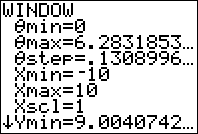Dear Readers,
I usually use Calcblog’s Twitter for less-official communication, but as I always have lots of thoughts on education and how to improve Calcblog, I thought I’d write a post which is less of a tutorial and more of a true blog entry. If you like this, let me know, and I’ll start doing it more often.
As an introductory statement, as always, I love to hear from readers via our contact form, Twitter account, or Facebook page. I especially think Facebook is a great platform for discussion, though most of our users follow us on Twitter. Once we get more followers on Facebook, I’d like to open up a math help discussion there or maybe hold some contests. Of course, if you haven’t already followed us on either of these networks, we’d love to have you join us!
Reader Questions
Occasionally, readers send in questions related to topics not covered in our tutorials. Of course, some of these questions are simpler than what a normal-length article would warrant, but I’d like to share the answers with all of our readers.
Question: How do I enter sec (or csc and cot) on my TI-89?
Answer: There is no secant, cosecant, or cotangent function on the TI-89 (the same goes for the TI-84 Plus and most other calculators), but you can easily enter these functions as the inverses of regular trigonometric functions:
secant(x) = 1/cosine(x)
cosecant(x) = 1/sine(x)
cotangent(x) = 1/tangent(x)
If you’d like to learn more about entering logarithms of different bases on your calculator, a similar question, check out our quick tip on this.
Question: I’m trying to graph the equation r=2-2*sin(θ) on my TI-84 calculator, and it looks all jagged, which isn’t what we learned in class. What’s going wrong?
Answer: Most likely, you need to set your calculator’s “theta step” to a smaller value, which can be reached by pressing the button. Typically, the TI-84 Plus and TI-84 plus use π/24, which is about .13, and graph over the range of θ = 0 to 2*π, so you have (2*π – 0)/(π/24) = 48 points plotted on your graph. (Remember, your calculator graphs by plotting points just as if you were graphing by hand.) If your theta step value is larger, you could be looking at angles on the order of 10-100 degrees between points, which is going to give you a jagged graph which in some cases may not even look like the function it’s supposed to represent.

Window Menu for Polar Graphing on the TI-84 with standard settings for θmin, θmax, and θstep.
Thoughts
Polar graphing can be somewhat difficult to learn at first, but it’s incredibly powerful, and it’s useful for students to grasp the idea that there is more than one way of representing a point in space. (Many students only think about Cartesian coordinates.) Graphing, as well, is a very useful way of looking at data, and it’s an important skill to understand what the graph of a function tells us. This has applications in science, statistics, and many aspects of daily life, so it isn’t simply some pedantic idea used to make students suffer.
If there’s enough interest, I’ll make a video about polar graphing on either the TI-84 or TI-89 (or both). Making videos like this is time consuming, but can be very useful since it shows students exactly how to go through the process. Speaking of which, if you haven’t already seen it, check out and share our video on graphing on the TI-84 Plus. It’s amazing to think about all the articles Calcblog has after only being around for about 10 months, and this was certainly one of my favorites:
This made me think about some of the other great articles we’ve posted…here are some of my favorites:
Quadratic Formula Programming Tutorial on the TI-83 Plus and TI-84 Plus or on the TI-89
Linear Regression on the TI-83 Plus and TI-84 Plus or on the TI-89
Z-Testing on the TI-83 Plus, TI-84 Plus, and TI-89
I like these articles because they teach a new concept from beginning to finish, and these concepts are ones which are used in many different disciplines. Of course, we have lots of other great articles, and I can’t even remember them all! If you’d like, take your own journey through the Calcblog archives and let me know which articles you like the most or have used personally.
Other News
I’d like to thank everyone who has purchased our book, Ace the SAT Using Your TI Calculator, and especially those who have given us so much positive feedback. I feel extremely blessed that I am able to help people learn and excel and hope to continue this into the feature. If you haven’t read Ace the SAT yet and would like to order a copy for you or as a gift for someone else, you can find a link to its Amazon.com listing on our sidebar.
Thank you for following Calcblog!
Eric
